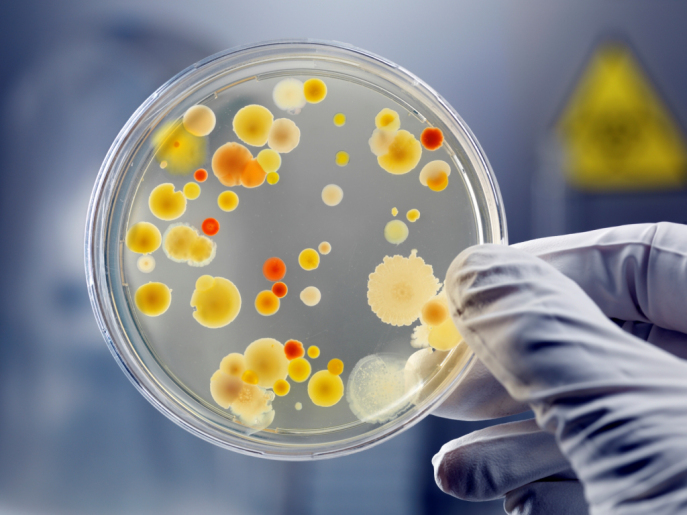
Bacterial Culture in Petri Dish
Investigation: Make gelatin nutrient media for bacterial/fungal culture, and sample a variety of surfaces to determine what's growing there. Sample some surfaces before and after cleaning to assess the effectiveness of various cleaners or sanitizers.

Bacterial Culture in Petri Dish
Step 1: Make your media
Materials:
- zip lock sandwich bags, foil cupcake liners, and cupcake pan, or disposable plastic petri dishes from a biological supply company
- plain, unflavored powdered gelatin packets (from the grocery store, in the cooking/baking aisle)
- beef boullion cubes (from the grocery store, in the cooking/baking aisle)
- sugar
- sauce pan and heating element
Methods: (this recipe makes 20-30 plates)
- Add 4 cups of cold water to a saucepan
- Mix in 4 packets of powdered gelatin
- Mix in 4 beef boullion cubes
- Mix in 4 teaspoons of sugar
- Bring slowly to a boil, stirring frequently
- Turn off heat, let cool for 5 minutes
- Put foil cupcake liners into cupcake pan (for stability), or set petri dishes out on flat surface
- Pour hot gelatin solution into containers until they are 1/3 to 1/2 full
- Cover, and allow the gelatin to cool until solid.
- Place foil cupcake liners into individual ziplock backs and refrigerate, or put petri dishes in refrigerator upside down.
Step 2: Collect samples
Materials:
- Q-tips
- pre-made gelatin culture dishes
- permanent markers
- scotch tape
Methods:
- Bring gelatin culture dishes up to room temperature.
- Use separate Q-tip cotton swabs to swipe various places around the house, such as a sink drain, bookshelf, doorknob, toilet bowl (gross!), your mouth, your palm, your armpit, drinking fountain, window sill, pond water, etc. Sample some students' mouths before and after a gargle with mouthwash. Sample some students' palms of the hands before and after washing with only water, soap and water, or a hand sanitizing gel.
- In a back and forth motion, gently swipe the Q-tip across the surface of the gelatin as though you were lightly tickling someone with a feather. Don't gouge the Q-tip into the gelatin; just gently streak it across the surface!
- Dispose of the Q-tip, cover the gelatin (ziplock bag or petri dish lid) and label it with a permanent marker indicating the date and location of the sample.
- Store out of direct light at room temperature. If using petri dishes, store them upside down and tape the lids shut.
- For health reasons (who knows what you're growing?) DO NOT OPEN once the sample has been collected and sealed! No joking!
Step 3: Observe
Over the next several days, you should see spots appear on the gelatin along the lines you streaked. These may be of a variety of colors. These are microscopic bacterial colonies that start out too small to see but which divide and multiply from the center outwards, using the gelatin solution as nutrient, until they are visible to the naked eye. They will continue to grow for a week or more until they get over-crowded, run out of nutrient, or their waste products build up in the dish and eventually poison them. You may also see fuzzy growths. These are most likely fungi. Dispose of the sealed cultures in the regular trash when done observing. Again, do not open the cultures just in case you managed to grow something that might make you sick.
Step 4: Discuss
References, further reading, links, videos
https://www.youtube.com/watch?v=dUB_zA9WgJE
http://www.sciencebuddies.org/science-fair-projects/project_ideas/microbio_homemademedia.pdf
http://www.umsl.edu/microbes/Classroom%20Activities/index.html